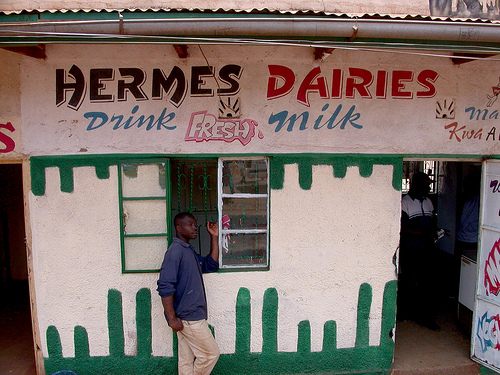This study aimed to determine the prevalence of aflatoxin in informally marketed milk in peri-urban Nairobi, Kenya, and to assess knowledge of milk traders on aflatoxins using questionnaires. A total of 96 samples were analyzed for aflatoxin M1 (AFM1) using enzyme-linked immunosorbent assay. In addition, boiling and fermentation experiments were carried out in the laboratory.
All samples had AFM1 above the limit of detection (5 ng/kg) (mean of 290.3 ± 663.4 ng/kg). Two-thirds of the samples had AFM1 levels above 50 ng/kg and 7.5% of the samples exceeded 500 ng/kg. Most of the traders had low (69.8%) or medium (30.2%) knowledge. Educated (p = 0.01) and female traders (p= 0.04) were more knowledgeable.
Experimentally, fermenting milk to lala (a traditional fermented drink) and yogurt significantly reduced AFM1 levels (p< 0.01) (71.8% reduction in lala after incubation at room temperature for 15 h, and 73.6% reduction in yogurt after incubation at 45ºC for 4h). Boiling had no effect.
The study concluded that the prevalence of raw milk with AFM1 was high, while knowledge was low. Fermentation reduced the AFM1 levels.![]()

